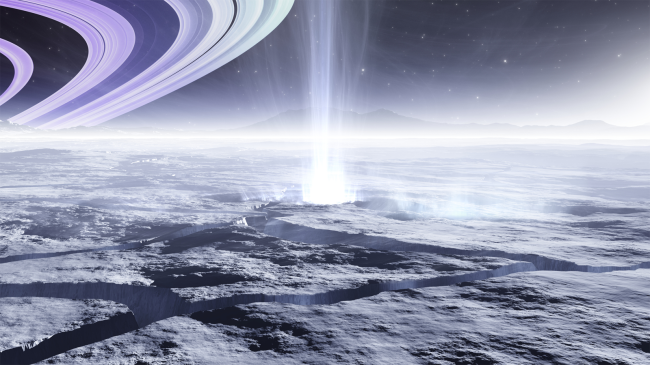
iStockphoto
Scientists believe ice plumes on Saturn’s moon Enceladus may hold the building blocks of life. They just need to go collect it.
“During its 20-year mission, NASA’s Cassini spacecraft discovered that ice plumes spew from Enceladus’ surface at approximately 800 miles per hour (400 m/s),” scientists at the University of California San Diego said in a statement. “These plumes provide an excellent opportunity to collect samples and study the composition of Enceladus’ oceans and potential habitability.”
In searching for signs of life in space, the scientists say there are three things they look for: water, energy and organic material.
“Evidence indicates that Saturn’s icy moon Enceladus is an ‘ocean world’ that contains all three, making it a prime target in the search for life,” the scientists wrote.
One of the main concerns is that the great speed of the plumes might fragment any organic compounds that are contained within the grains of ice, degrading any possible signs of life.
However, as they explain in the journal Proceedings of the National Academy of Sciences, through their research they have discovered “unambiguous laboratory evidence that amino acids transported in these ice plumes can survive impact speeds of up to 4.2 km/s, supporting their detection during sampling by spacecraft.”
That, in turn, leads them to believe that they could use a aerosol impact spectrometer created by UC San Diego Distinguished Professor of Chemistry and Biochemistry Robert Continetti and his co-workers, which was designed to study collision dynamics of single aerosols and particles at high velocities.
“This apparatus is the only one of its kind in the world that can select single particles and accelerate or decelerate them to chosen final velocities,” stated Continetti. “From several micron diameters down to hundreds of nanometers, in a variety of materials, we’re able to examine particle behavior, such as how they scatter or how their structures change upon impact.”
It is their hope that when NASA launches the Europa Clipper in 2024 it or other future probes like it can be used “to identify a specific series of molecules in the ice grains that could point to whether life exists in the subsurface oceans of these moons.”